Classic gear: Gretsch White Falcon
Gretsch spared no expense with the launch of its flagship guitar…
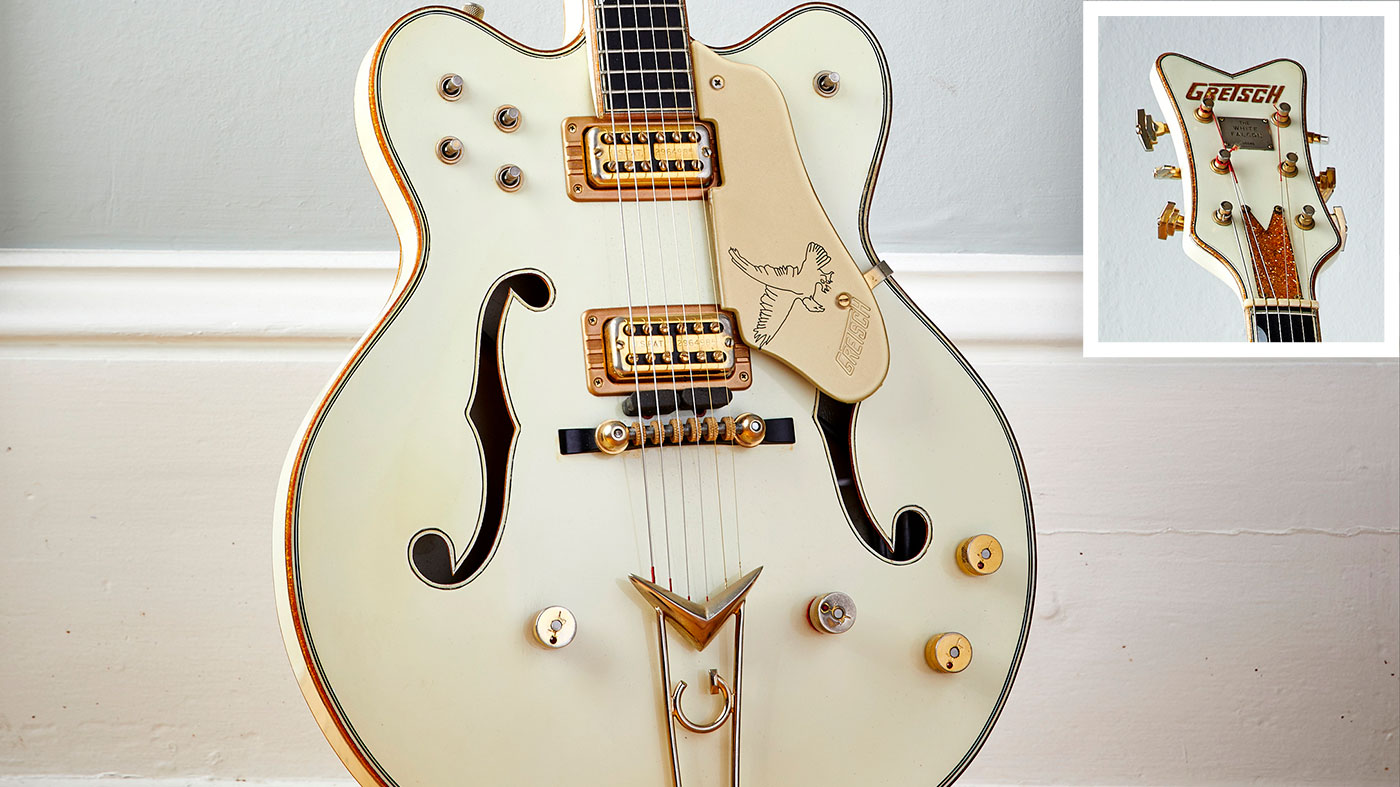
Most guitar builders have their pièce de résistance - a flagship model that represents the pinnacle of their craftsmanship; Gibson took Lloyd Loar’s ground-breaking L-5 to the ultimate level with the Super 400 (originally labelled the L-5 Super), whilst Paul Reed Smith literally made his dreams become reality with the fantastically ornate Dragon guitars.
The jewel in Gretsch’s crown came in the form of a guitar called the White Falcon. Originally intended as a one-off display centrepiece for the 1954 NAMM trade show, it ended up turning so many heads that by the following year Gretsch had put it into regular production, designated as the model 6136.
The angular geometry of dream cars was strongly reflected in the White Falcon’s design
It was appearance as much as anything that made the White Falcon stand out from the crowd. Although the Gretsch company had set up shop in Brooklyn, New York in 1883, it certainly wasn’t stuck in the Victorian era and was a notably forwardthinking firm with regards to aesthetics.
In a similar vein to Fender and Gibson’s infatuation with the 1950s motor craze, the angular geometry of dream cars was strongly reflected in the White Falcon’s design. Stairstep tuners, a V-contoured headstock and a ‘G’ monogram tailpiece adorned with a V-shape reminiscent of car bonnet ornaments were all set off against a custom colour-style white finish (with more than a sprinkling of gold throughout for that aureate touch of class).
With a 25½-inch (648mm) scale length, the White Falcon measures 17-inches (432mm) across and is essentially a large, fully hollow, thinline electric archtop guitar with f-holes. It features a pressed maple top, laminated maple back and sides, a glued-in maple neck and an ebony fingerboard.
These comparatively harder tonewoods lend a bright acoustic resonance to the White Falcon’s natural sound and when coupled with a pair of single coil, high output DeArmond DynaSonic pickups it makes for a full, clear tone that cuts through with plenty of twang.
Coupled with a pair of single coil, high output DeArmond DynaSonic pickups it makes for a full, clear tone that cuts through with plenty of twang
In 1958, a pair of noise-cancelling dualcoil Filter’Tron pickups were added, providing a little more in the way of sparkle and crunch to the overall tone. In the same year, a stereo version of the White Falcon arrived with a patented system called Project-O-Sonic, designated as model number 6137. The Project-O-Sonic design was a bold leap into the new-fangled world of stereo and although stereo guitars never really caught on, it was a sure sign of Gretsch’s continued ethos of progression.
Get the MusicRadar Newsletter
Want all the hottest music and gear news, reviews, deals, features and more, direct to your inbox? Sign up here.
By 1962 White Falcons were being shipped with a double-cutaway as standard and it wasn’t until the early 70s that Gretsch began to reintroduce the original singlecutaway version as model number 7593. In 1971, the company renumbered the nonstereo/ mono and stereo double-cutaway versions to 7594 and 7595 respectively, however, in 1980 both the 7593 and 7594 models were discontinued with the 7595 being available only on special order.
By 1981 Gretsch had discontinued them all. The Gretsch White Falcon has picked up its fair share of admirers over the years (albeit most from a distance!) and is famously associated with several name guitarists including Neil Young, John Frusciante, Brian Setzer and Billy Duffy.
Gretsch White Falcon 6137
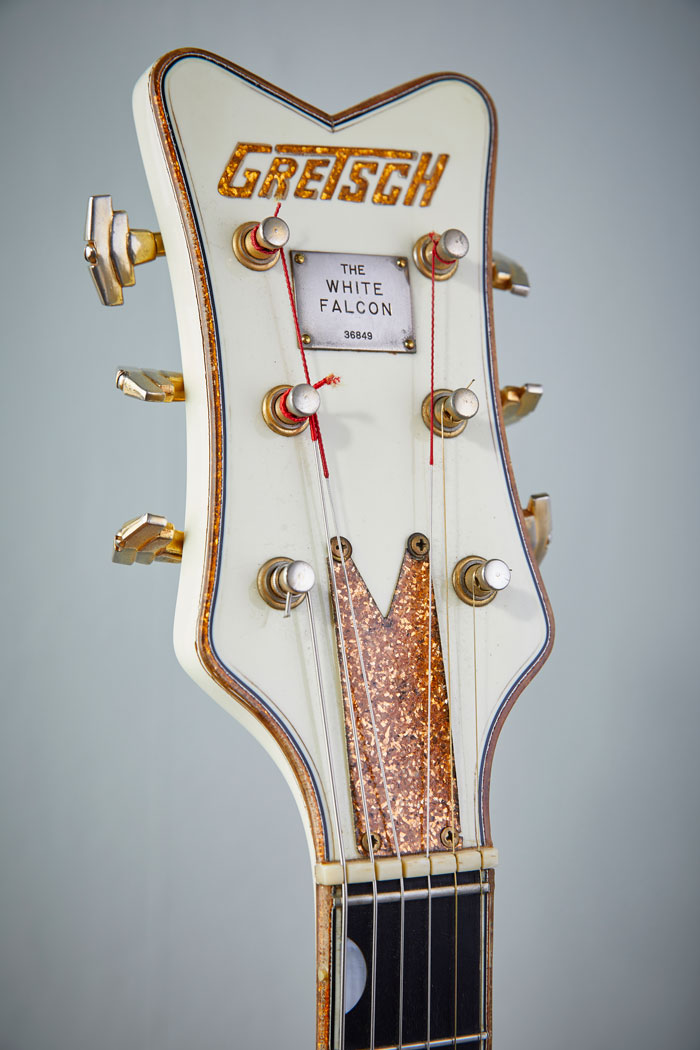
Serial number
Stamped into gold nameplate on front of headstock: “THE WHITE FALCON 36849”
Headstock
V-shaped top; horizontal Gretsch logo in gold; gold sparkle binding and V-top truss rod cover; white finish
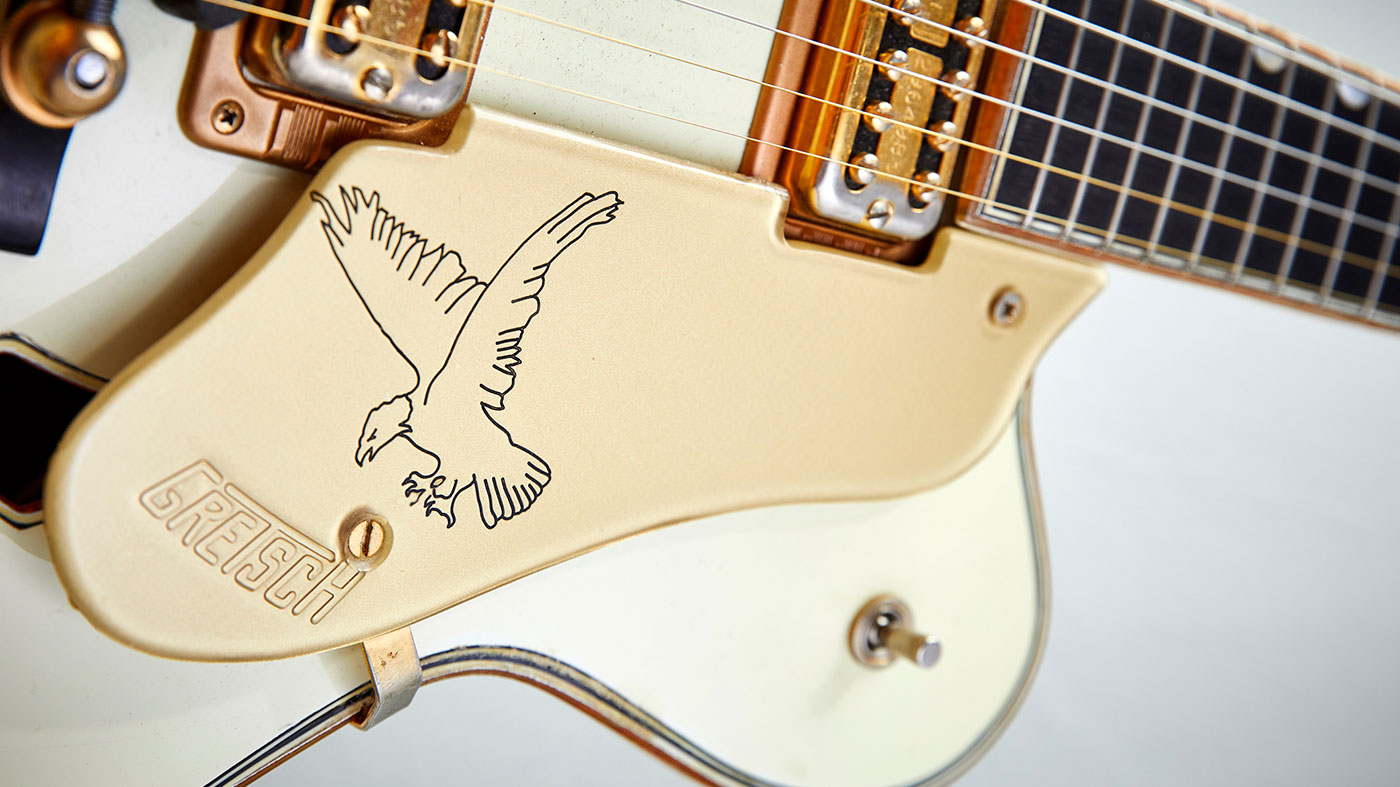
Plastics
Gold pickguard with Falcon graphic and Gretsch logo; split/double foam mutes in front of bridge; white detachable back pad; white plastic rear control cavity cover; gold sparkle top and back binding; gold pickup surrounds; gold sparkle neck heel cover
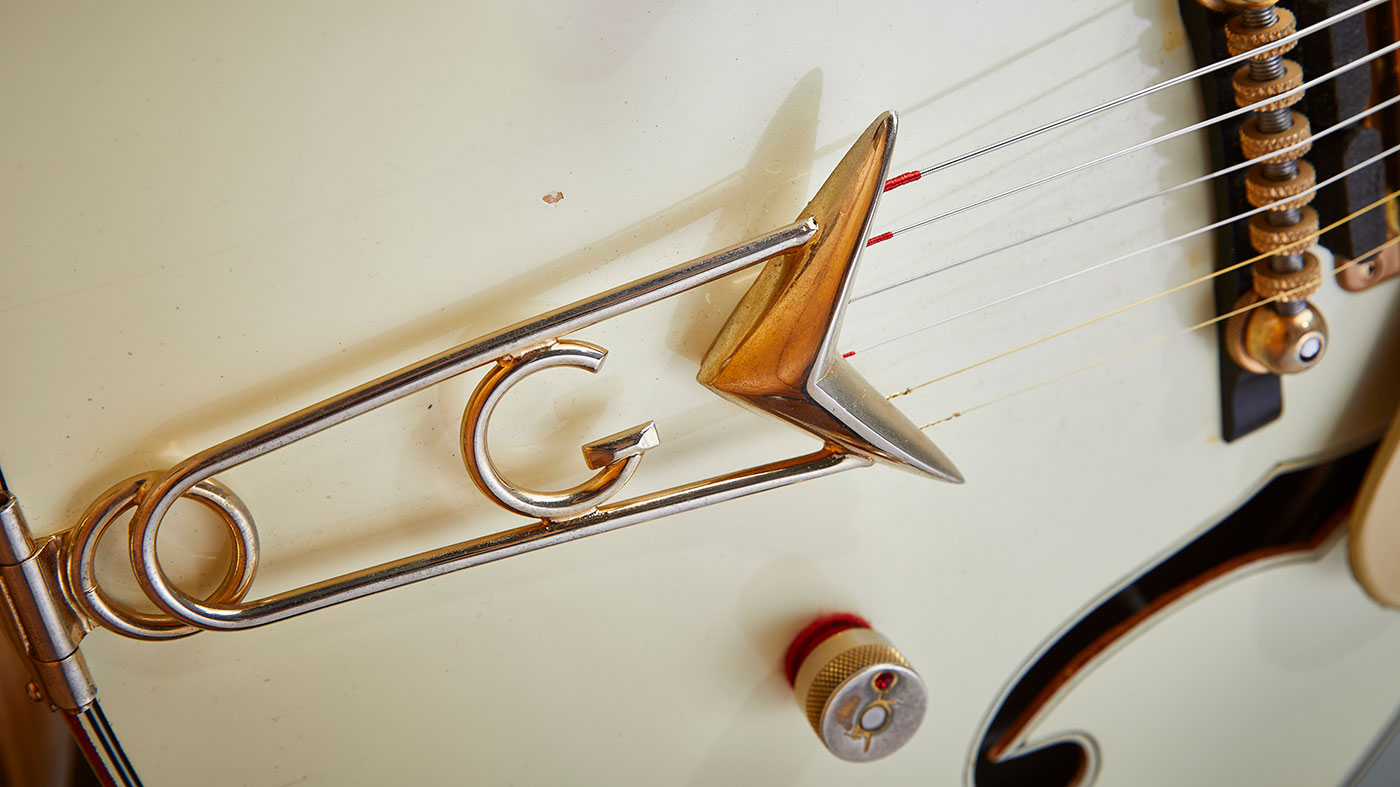
Hardware
Gold plated stairstep tuners, Cadillac ‘G’ tailpiece and roller bridge; two mute knobs either side of bridge; two gold pickup volume knobs; two gold plated screw-in strap buttons
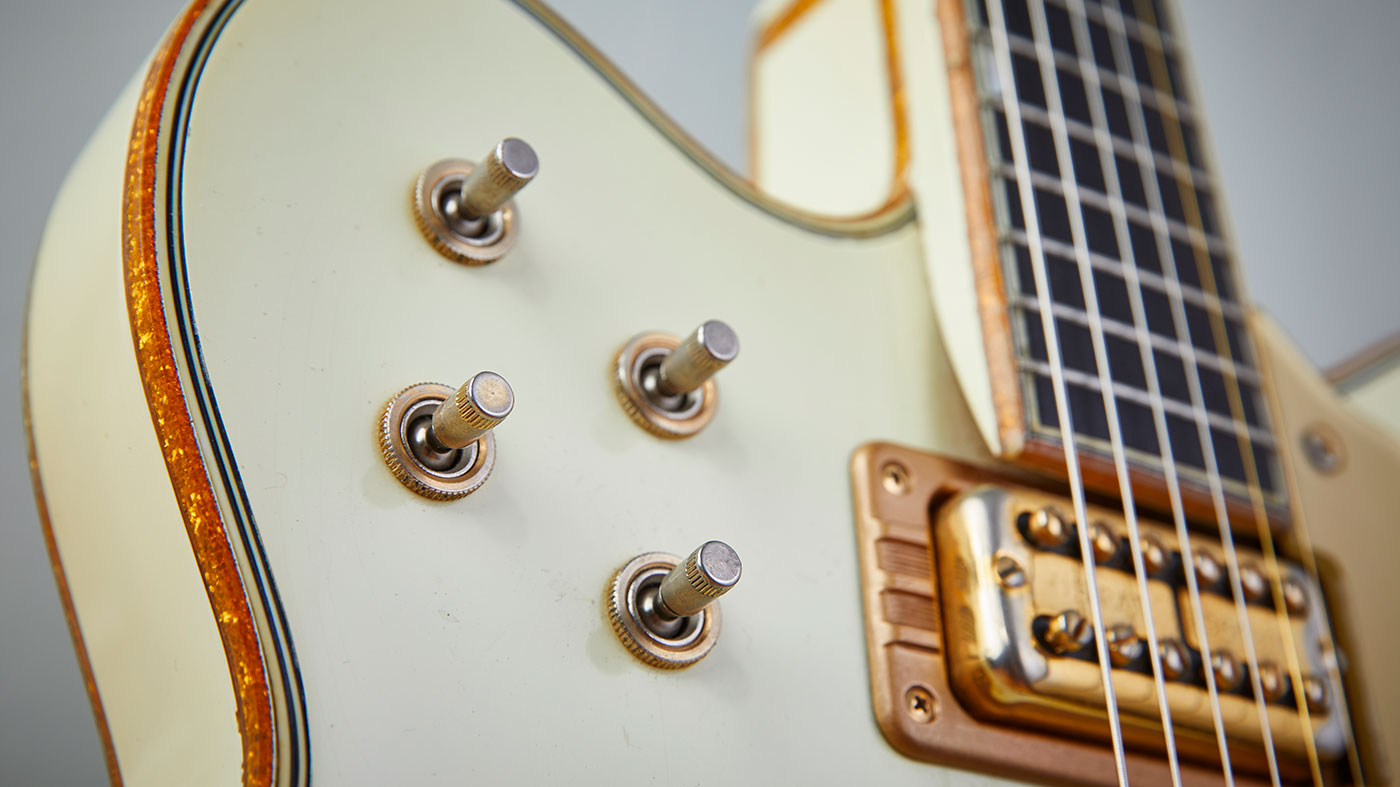
Pickups
Dual patent number Filter’Tron double coil pickups stamped “U.S. PAT. 2892371” with split stereo signal; four three-way tone switches on upper bass bout; three-way pickup selector switch on upper treble bout; independent pickup volume pots on lower treble bout
Body
Fully hollow double-cutaway thinline with double bound f-holes; pressed arched maple top; laminated maple back and sides; white finish
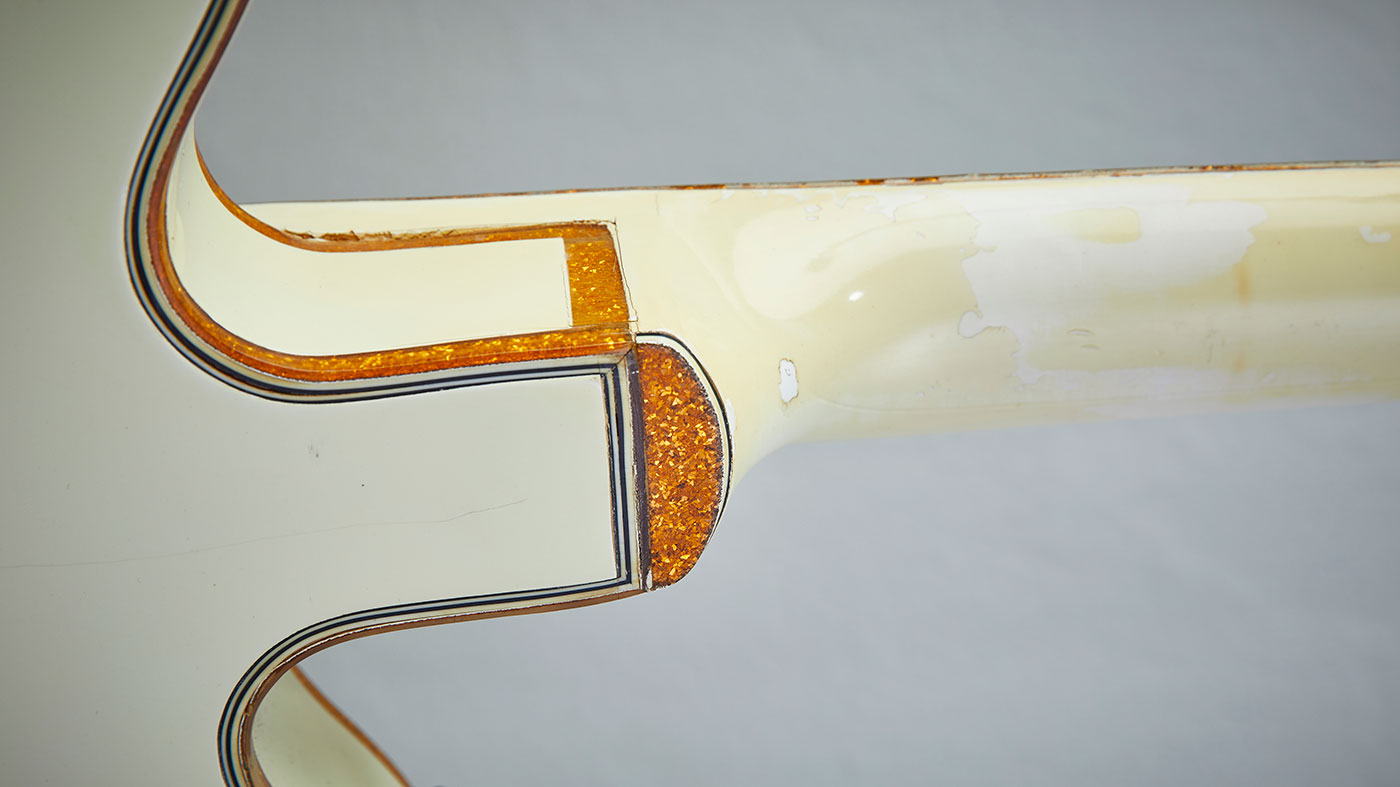
Neck
Glued in maple neck with white finish; ebony fingerboard with 22 frets (including zero); ‘thumb’ inlays up to 17th fret
The evolution of the White Falcon
- 1954: Gretsch’s Jimmie Webster unveils the White Falcon at the NAMM trade show in Chicago
- 1955: Model 6136 commences production: single-cutaway, DeArmond DynaSonic pickups
- 1958: ‘Thumb’ inlays on fretboard, dual Filter’Tron pickups. Stereo version
- 1960: Split/double bridge mute added, detachable padded back appears
- 1962: Double-cutaway body becomes standard; zero fret appears
- 1964: Oval tuners begin to replace stairstep type; Gretsch ‘G-plate’ vibrato appears
- 1965: Adjustable/telescopic vibrato arm introduced; dot inlays from 15th fret
- 1971: Model numbers change to 7594 (mono) and 7595 (stereo)
- Early 70s: Single-cutaway reintroduced as model number 7593
- 1981: All models discontinued
Rod Brakes is a music journalist with an expertise in guitars. Having spent many years at the coalface as a guitar dealer and tech, Rod's more recent work as a writer covering artists, industry pros and gear includes contributions for leading publications and websites such as Guitarist, Total Guitar, Guitar World, Guitar Player and MusicRadar in addition to specialist music books, blogs and social media. He is also a lifelong musician.
“Its mission is simple: unleash the power of any amplifier or line-level source without compromise”: Two Notes promises a “watershed” in tube amp control with the Torpedo Reload II
MusicRadar deals of the week: Enjoy a mind-blowing $600 off a full-fat Gibson Les Paul, £500 off Kirk Hammett's Epiphone Greeny, and so much more












